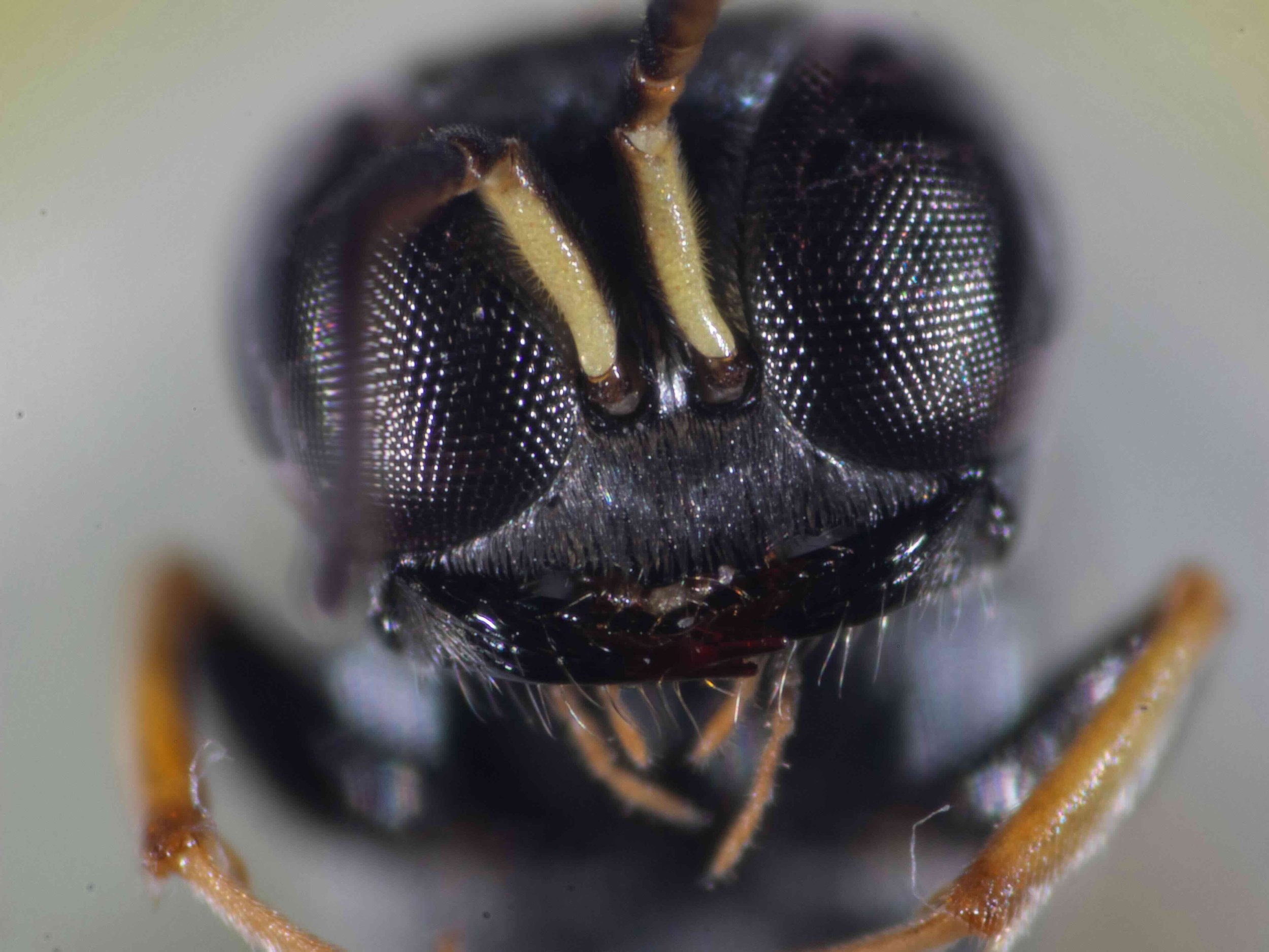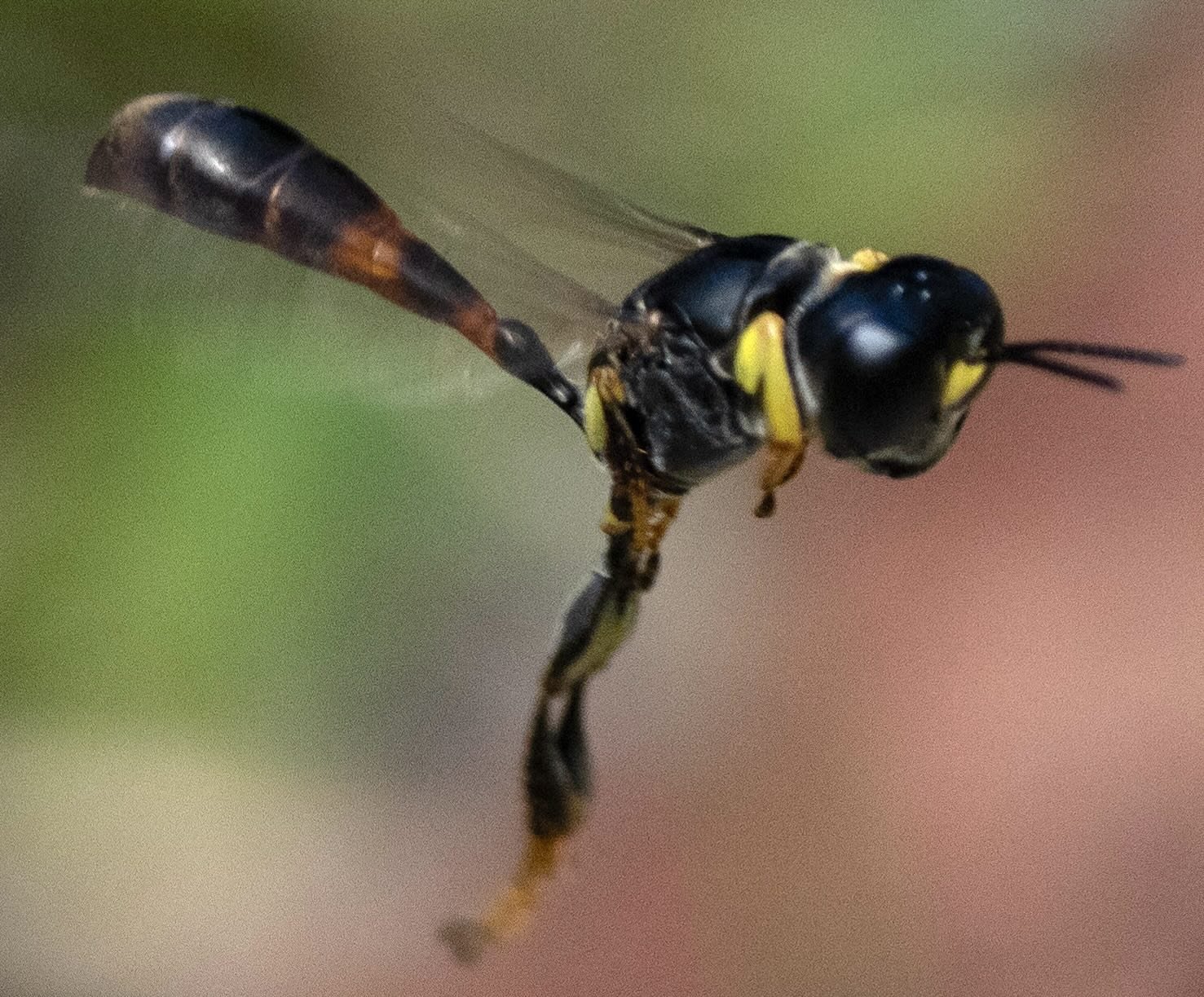Crabronini (CRABRONINAE)

Workbook
Wasps in this tribe are readily distinguised from other Crabronidae by the combination of:
single submarginal cell
inner margins of eyes entire (not notched) and converging below
scape relatively long (about half length of flagellum) (cf Miscophini)
stigma not enlarged (cf Pemphredoninae)
They range in size (2-14mm) and tend to have: a large, cuboidal head; a stout thorax and legs. Many have the inverted ‘moustachio’ look – a transverse, silvery clypeus flanked by pale scapes forming a distinctive U-shape … but this is not universal. The gaster shape varies widely and is a useful character in identification to genus.
Refer to the summary table on the Crabronidae Hub page to compare the features of crabronid subfamilies and families.
The following table and images are an aid to genus-level identification of Australian Crabronini.
Gaster shape warrants a special mention
One of the first steps in distinguishing genera among the crabronini is the shape of the gaster. For example, a long, club-shaped gaster with an elongate and nodose first segment = Rhopalum or Podagritus. However, it’s not quite so simple when it comes to the species with shorter, ovoid gasters. Authors, including Leclercq, use terms such as sessile, subsessile, pedunculate, subpeduncate … but the distinctions are unclear. Indeed the situation of Rhopalum highlights the challenge. I would not like to hazard labelling each diagram in Leclercq (1997, p. 101), and even the author seems to hedge with “+-” qualifiers.
Despite this, for most species of Crabronini we are limited to text-only descriptions, and most of these include terms such as sessile, pedunculate and petiolate. The glossary in Bohart & Menke (1976) is a useful reference, but I suggest that it pays to interpret the terms used in species and genera descriptions quite broadly.
Some genera are quite constant in the shape of the abdomen, so example images or diagrams may be applied to other species of the same genus. This is not the case, however, for Rhopalum, Podagritus or Ectemnius … and perhaps others.
Bits & Pieces
A mixed collection of diagrams and verified images, with an emphasis on illustrating gaster shape.
References
Bohart, R.M. & Menke, A.S. 1976. Sphecid Wasps of the World: A generic revision. University of California Press, Berkeley.
Leclercq, J. 1954. Monographie Systématique, Phylogénétique et Zoogéographique des Hyménoptères Crabroniens. Liège : Lejeunia Press 371 pp.
Leclercq, J. 1974. Crabroniens d'Australie (Hymenoptera Sphecidae and Crabroninae). Bulletin et Annales de la Société Royale Belgique d'Entomologie 110: 37-57
Leclercq, J. 1995. Hyménoptères Sphécides Crabroniens du genre Piyuma Pate, 1944 des régions Orientale et Australienne. Lambillionea, Revue Internationale d'Entomologie 95: 407-419
Leclercq, J. 1997. Hyménoptères Sphécides Crabroniens d'Australie, du genre Rhopalum Stephens, 1829. Notes Fauniques de Gembloux 32: 1–101
Pate, V.S.L. 1946. On Eupliloides, an Oriental subgenus of Crossocerus (Hymenoptera: Sphecidae: Pemphilidini). Proceedings of the Entomological Society of Washington 48: 53-60
Turner, R.E. 1908. Notes on the Australian fossorial wasps of the family Sphegidae, with descriptions of new species. Proceedings of the Zoological Society of London 1908: 457-535 pl. xxvi
Turner, R.E. 1917. New species of Hymenoptera in the British Museum. Transactions of the Entomological Society of London 1917 (1): 53-84
This is a workbook page … a part of our website where we record the observations and references used in making species identifications. The notes will not necessarily be complete. They are a record for our own use, but we are happy to share this information with others.






















